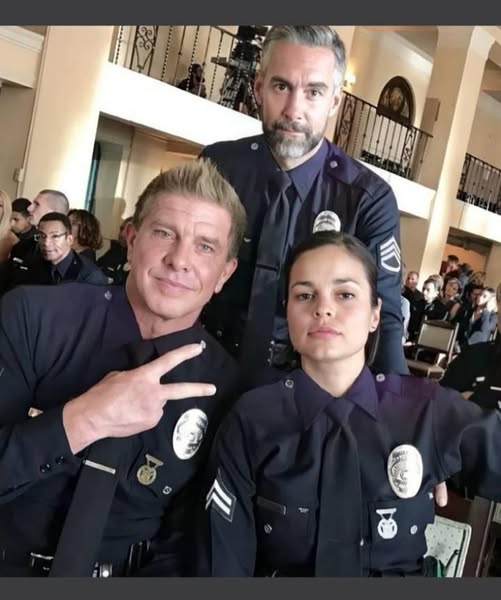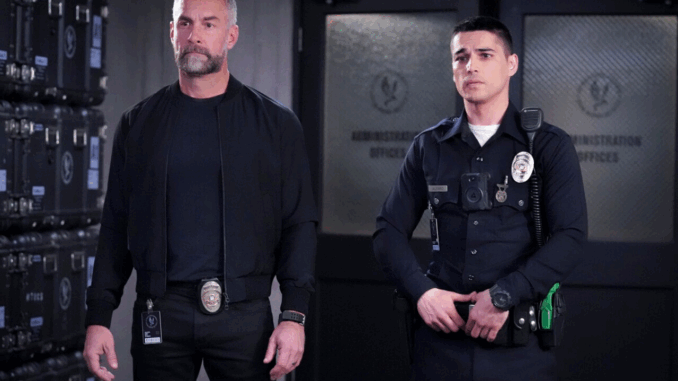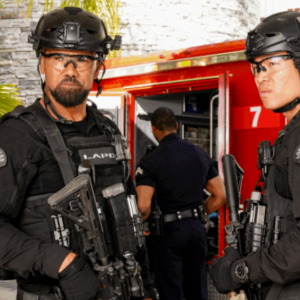When a popular television series faces cancellation not once, not twice, but three times, it’s easy for loyal fans and the dedicated cast to feel a profound sense of disheartened finality. This has been the tumultuous rollercoaster ride for “S.W.A.T.,” the high-octane police drama led by the charismatic Shemar Moore. From its inception, the series captivated audiences with gripping action sequences, intricate tactical operations, and deeply heartfelt characters, quickly establishing itself as a standout in the crowded landscape of police procedurals. A modern reboot of the iconic 1970s series and subsequent film, “S.W.A.T.” carved its own niche by blending explosive action with a nuanced exploration of contemporary social issues.
The show’s premise centered on Sergeant Daniel “Hondo” Harrelson Jr. (played by Moore), a Los Angeles-born and raised S.W.A.T. leader tasked with bridging the gap between law enforcement and the communities it serves. Hondo’s unique background and strong moral compass positioned him as an ideal protagonist for a series that aimed to be more than just shoot-em-up entertainment. The show fearlessly tackled sensitive topics such as police accountability, racial tensions, gang violence, and community relations, offering perspectives that often reflected real-world complexities. The diverse ensemble cast, including characters like Deacon Kay, Chris Alonso, Jim Street, and Tan, each brought their personal struggles and professional challenges to the forefront, forging a bond with viewers who appreciated the depth beneath the tactical vests. This commitment to character development and timely themes, combined with its reputation for delivering impressive, cinematic action, garnered a robust and passionate viewership.
Despite its critical and audience appreciation, “S.W.A.T.” has faced a uniquely challenging journey through the network television landscape. Its initial premiere garnered strong ratings, building on a legacy of police dramas but injecting a modern sensibility that resonated widely. However, over time, shifts in network priorities, evolving viewership trends, and the ever-present pressures of production budgets led to a series of precarious situations. The first and second cancellations sent ripples of concern through the fanbase, yet each time, the show managed a miraculous comeback, often due to renewed deals and the growing influence of streaming platforms which provided new life and broader accessibility for the series. These reprieves fueled a fierce loyalty among viewers, who had grown accustomed to fighting for their favorite show.

The announcement of the third cancellation felt distinctly different—more definitive, more like a potential end than a temporary setback. Yet, just as despair began to settle, a beacon of hope emerged. The optimistic update came directly from a key cast member, rumored to be Shemar Moore himself, who spoke candidly about the situation. Their message was unambiguous: while the show’s future isn’t guaranteed, it is far from dead. This declaration of resilience—”We’re not flatlined completely”—has ignited a fresh wave of conversations among fans, industry insiders, and network executives alike.
The metaphor of “not flatlined completely” serves as a powerful symbol, particularly within the unpredictable entertainment industry. It vividly suggests that despite significant setbacks, there remains a discernible pulse, a flicker of life. The show might be metaphorically on life support, but it hasn’t flatlined entirely. This analogy deeply resonates with the millions of fans who refuse to let “S.W.A.T.” fade away, who envision its return to active duty.
Indeed, one of the most significant factors keeping shows like “S.W.A.T.” alive in the modern era is the symbiotic relationship between streaming platforms and hyper-engaged fan communities. “S.W.A.T.” had already experienced a notable resurgence in popularity through online streaming, finding new audiences and consolidating its existing fanbase beyond linear television broadcasts. Faced with the threat of permanent cancellation, loyal fans have consistently rallied, leveraging the immense power of social media campaigns, online petitions, and dedicated fan groups to amplify their collective voice, making it clear to decision-makers that there is a substantial audience hungry for more. This grassroots activism has proven to be a vital force in the show’s persistent fight for survival.

The hopeful update has consequently opened up several exciting possibilities for the series’ future, reflecting the flexible nature of contemporary television production and distribution. One potential path involves the creation of spin-offs or reboots. Given Shemar Moore’s unwavering commitment to the “S.W.A.T.” universe and the inherent richness of its world-building, a fresh take could emerge. A more immediate and frequently successful avenue is a platform switch; moving to a streaming service could breathe entirely new life into the franchise, freeing it from the constraints of traditional network television schedules and budgeting models. Alternatively, the show could return in a more contained format, such as a limited series or a standalone movie, serving to wrap up ongoing storylines or gauge renewed audience interest.
Shemar Moore, as the heart and soul of “S.W.A.T.” and its lead actor, has been an exceptionally vocal and tireless advocate for the show. His palpable passion for the character of Hondo and the overarching narrative has been a constant source of inspiration for both the production team and the sprawling fanbase. Moore’s significant influence and deep connection with the audience are undoubtedly key factors in any potential comeback scenario, underscoring the vital role a lead actor can play in a show’s longevity.
The ongoing struggle with cancellations, despite evident popularity, points to a complex interplay of behind-the-scenes challenges. These often include significant network shifts towards new content strategies, mounting budget constraints for high-production-value dramas, and the pervasive changes in viewer habits, with audiences increasingly opting for on-demand streaming over traditional broadcast schedules. Understanding these multifaceted challenges provides crucial context for the show’s uncertain, yet persistently hopeful, future.

The initial update immediately sparked a flurry of diverse responses across online platforms. While some fans expressed cautious optimism, preparing to lend their full support, others remained more skeptical, albeit still hopeful, having experienced the emotional whiplash of multiple cancellations. Regardless of the ultimate outcome, “S.W.A.T.” has already cemented a significant legacy within the police drama genre. Its consistent focus on diverse characters, complex ethical dilemmas, and a genuine portrayal of authentic teamwork has set a contemporary template for future shows looking to engage with both action and social relevance. Any successful revival efforts would undoubtedly build upon this already strong foundation, further enriching its established narrative and thematic core.
The history of television offers numerous compelling examples of shows that have defied the odds and returned from the brink of cancellation. “Brooklyn Nine-Nine,” for instance, famously made a triumphant move from Fox to NBC, enjoying several more successful seasons. Similarly, “Lucifer” was resurrected by Netflix after its cancellation by Fox, proving the power of streaming platforms to give beloved series a second, or even third, chance. These inspiring success stories serve as powerful testaments to resilience and fuel the fervent hope among “S.W.A.T.” fans that their beloved drama can indeed chart a similar path back to the screens. The unwavering belief that “S.W.A.T.” isn’t out of the game yet remains a driving force for its passionate community. While the path ahead for “S.W.A.T.” may remain uncertain, the phrase “not flatlined completely” encapsulates the prevailing spirit: with a passionate fanbase and committed creative forces, the possibility of a return, no matter how unexpected, always lingers. The narrative of “S.W.A.T.” feels far from concluded; it’s a testament to the enduring power of compelling storytelling and the extraordinary dedication of those who believe its heart still beats.





